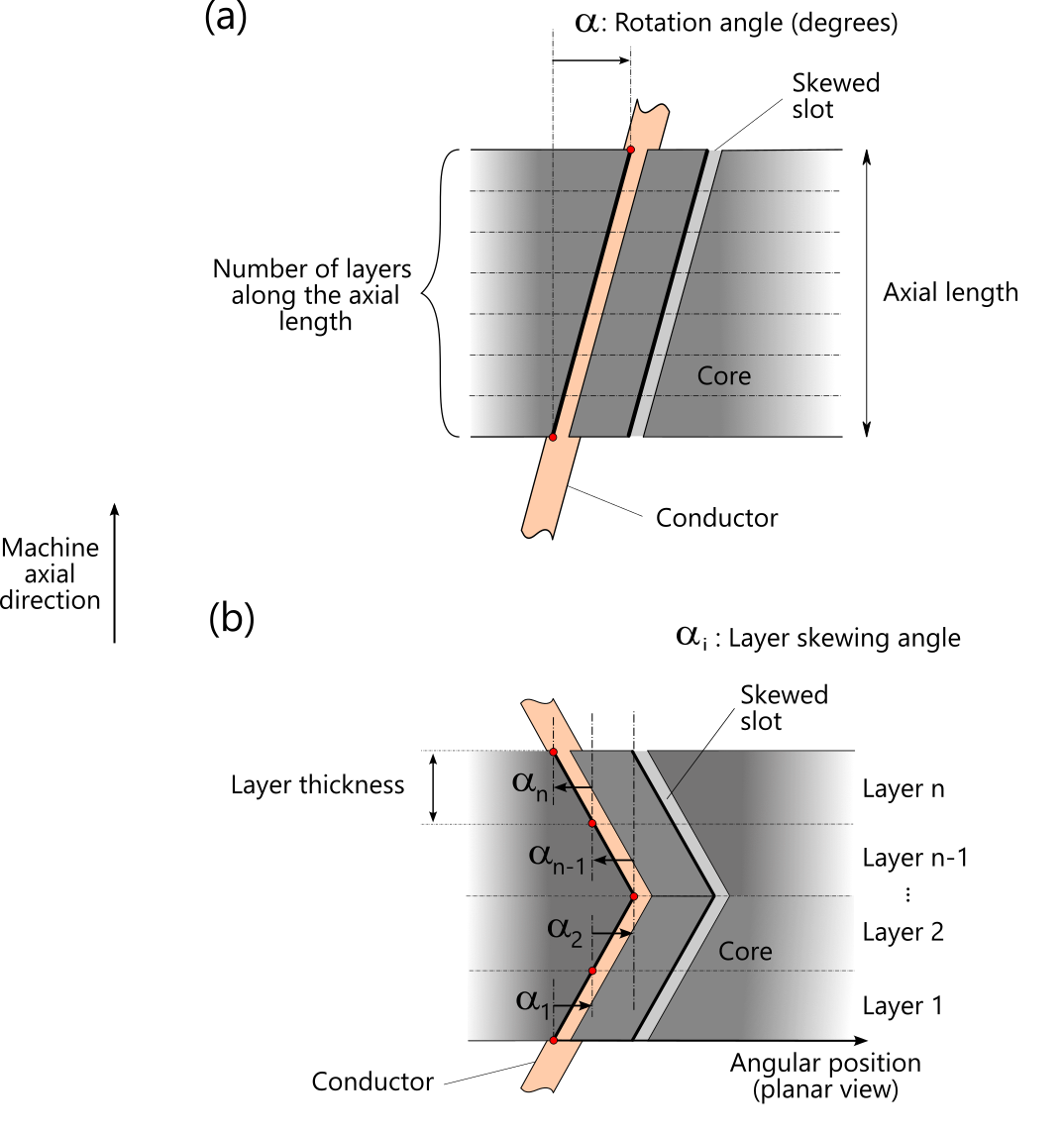Creating an application for machines with continuous skewing
Introduction
In a Flux Skew project, the type of skewing (i.e., continuous or step) of a machine is a property of the application.
- How to create an application with continuous skewing.
- Example of application.
How to create an application with continuous skewing
- Only magnetic applications exist in Flux Skew, as discussed in the topic: Flux Skew magnetic applications.
- For all applications in Flux Skew, the Definition tab of the application creation window contains a Skewing definition section. This section must be completed with construction parameters of the skewed machine.
- Skewed mechanical set: in this drop-down menu, the user must choose
between Fixed mechanical set and Rotating mechanical set.
Note: Only the regions linked to the chosen mechanical set will be subjected to skewing. This option allows distinguishing between machines with skewed rotors (usually linked to a rotating mechanical set) or skewed stators (usually linked to a fixed mechanical set).
- Skewing type: in this drop-down menu, the user must choose Continuous skew
- Topology description: two approaches are available, namely the Simple (homogenous layers) method and the Advanced (layer by layer) method.
- The Simple (homogenous layers) description method is straightforward
and requires only three parameters (accordingly with part (a) of Figure 1):
- the Length unit allowing to choose the unit (or to create a new one) for the Axial length;
- the Axial length;
- the Rotation angle or skew angle, in degrees;
- the Number of layers along the axial length, or the axial
discretization of the skewed machine after its 3D reconstruction (in
post-processing). Note: This parameter also corresponds to the total number of linked 2D finite element problems solved by Flux Skew along the axial length of the machine during resolution, as discussed in the topic: What is Flux Skew?
- The Advanced (layer by layer) method is also available and allows the
description of more complex topologies (V skewing, for instance). In this
approach, the user must fill a table in which each line represents a skewed
layer. Two parameters are required for each layer (accordingly with part (b)
of Figure 1):
- the Length unit allowing to choose the unit (or to create a new one) for the Layer thickness;
- the Layer thickness;
- the Layer skewing angle, in degrees.

Figure 1. Planar representation of the magnetic core (either the rotor or stator) of an electrical machine with skewed slots. The parameters required by Flux Skew to describe the topology of a machine with continuous skewing are highlighted, the Simple description in (a), and the advanced description in (b).
The remaining tabs of the application creation window are similar to their Flux 2D and Flux 3D counterparts and depend on the specific application chosen by the user.
Once the description of the application is completed, the user is ready to proceed with the 2D description of a rotating electric machine with continuous skewing in Flux Skew's environment.